The Allure of 1920s Fashion: Styles and Influence
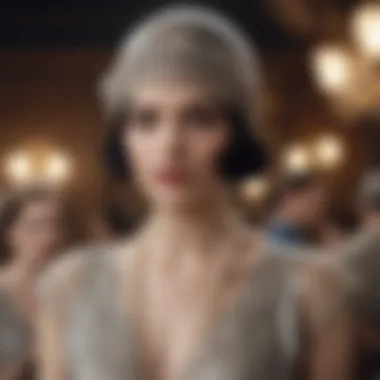
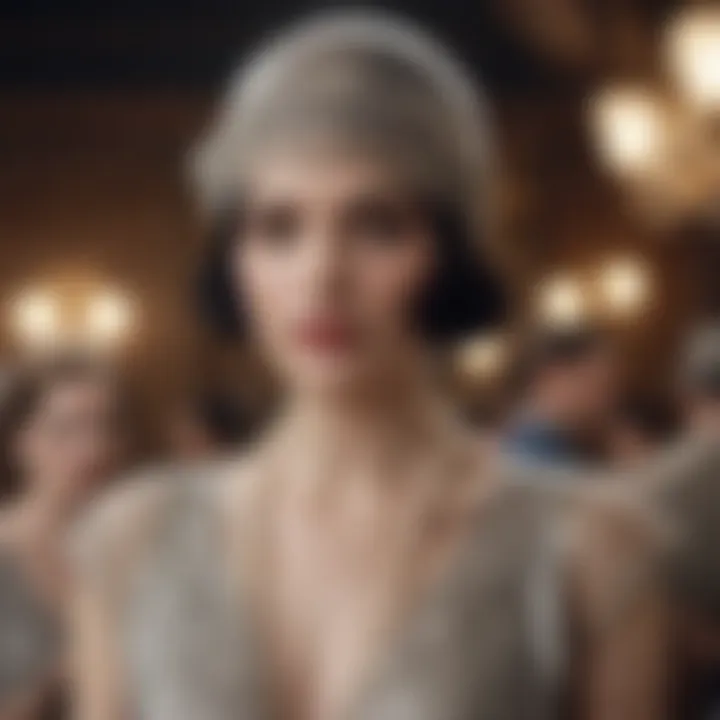
Intro
The 1920s was not just a decade; it was a cultural phenomenon that radically transformed fashion and society. Often dubbed the "Roaring Twenties," this era witnessed a break from tradition as women began to assert more independence, mirroring the seismic shifts occurring in the social landscape. This article aims to peel back the layers of history to explore the alluring fashion trends of the time, illuminating the styles, materials, and societal influences that left an indelible mark on contemporary design. As we travel through these sparkling streets of the past, you will find inspiration to incorporate elements of the 1920s into your own wardrobe while navigating today's trends.
Fashion Trends
The fashion of the 1920s captured a spirit of freedom and exuberance, reflected through the avant-garde styles that became synonymous with the decade. From flapper dresses that danced in time with jazz rhythms to tailored suits that echoed a more androgynous approach to femininity, the clothing of this era was anything but ordinary.
Seasonal Styles
Each season brought with it a medley of distinctive styles that covered a range of tastes and occasions. Spring and summer favored lighter fabrics such as chiffon and silk. Dresses often featured intricate beadwork and were adorned with fringe that swung with every step, embodying the lively energy of outdoor gatherings and dances. Fall and winter, however, showcased luxurious wool blends and satin silhouettes that offered a more polished look for soirées and formal events.
- Lightweight materials enhanced movement during the warmer months.
- Beading and embellishment were essential for glamour, especially on evening gowns.
- Suiting styles for women gained popularity, offering an elite alternative that provided both comfort and chicness.
Influencer Inspirations
Though social media didn't exist in the 1920s, there were still notable influencers of the time: stars of the silver screen such as Clara Bow and Louise Brooks were admired not just for their acting but also for their daring fashion statements. Their styles rapidly influenced the public and transformed shopping into a popular pastime.
"Girls are taking over the world!" — A common sentiment reflecting the rise of women in society during the 1920s.
Celebrity endorsements drove the desire for flapper dresses, bobbed haircuts, and cloche hats, which still resonate today. Such iconic figures laid the groundwork for future generations of fashion icons, including those we see on our social platforms today.
Beauty Tips
Beauty practices during the Roaring Twenties were just as revolutionary as the fashion. Women began to experiment with makeup, leading to the establishment of beauty routines that are familiar yet radical even now.
Skincare Routines
A good skincare routine was seen as essential for maintaining one's glow, which was especially important as cosmetics gained prominence. Moisturizing creams and cleaning oils became the staples. Night creams filled with nourishing ingredients like lanolin were touted as the secret to youthful skin.
- Daily cleansing to remove heavy face powder.
- Hydration through the use of oils and creams.
- Sun protection wasn’t yet recognized, but the desire for pallid complexions drove some to seek lighter skin.
Makeup Techniques
Luminescent skin, bold lips, and emphasizing the eyes through kohl was a striking feature of 1920s makeup. Everyday women emulated the glamorous looks of film stars. Red lips became a symbol of boldness, while dark eye makeup created a sultry allure.
- Face powder to achieve that matte finish.
- Eyebrow shaping to express femininity or rebellion.
- Eyeliner emphasized the eyes, giving an alluring aspect to the makeup look.
Synthesis of Styles
Reflecting on the significance of fashion from the 1920s reveals a tapestry of cultural changes that reshaped societal norms. The glamour of this era wasn’t just about aesthetics; it marked a transition towards liberated self-expression through clothing and beauty. The clothes women wore became a form of identity, allowing them to step into roles that challenged conventional expectations.
In adapting 1920s fashion into modern wardrobes, there’s room for interpretation while still respecting the past. Consider how you can stylishly merge the exuberance of the 1920s into your lifestyle. Think about rocking a fringed jacket over jeans for a casual outing or pairing a cloche hat with a modern dress to create a chic ensemble.
Embracing this rich historical context not only enhances personal style but also honors the women of the past who paved the way for the dress we enjoy today.
The Roaring Twenties: An Overview
The Roaring Twenties, often dubbed the Jazz Age, holds a vibrant place in history known for its unique blend of exhilarating change and cultural evolution. This period, spanning from 1920 to 1929, marked a departure from tradition, a rebellion against the preceding conservative norms shaped by the First World War. In the realm of fashion, this decade was particularly pivotal as it saw the emergence of symbols of freedom, self-expression, and exuberance that would go on to shape the landscape of 20th-century style.
The significance of understanding the Roaring Twenties lies in grasping how social dynamics, technological advances, and artistic movements collided to produce an era of unrestrained vitality. The way people dressed reflected not just their personal taste but also their changing roles in society. Women began casting aside tightly laced corsets in favor of more liberated silhouettes, underscoring a newfound sense of independence and modernity.
Beneath the glitzy exterior of speakeasies and flapper celebrations, deeper cultural shifts were afoot. The rise of jazz music and dance as central cultural elements cannot be overlooked. Many garments became designed not only for visual appeal but also for comfort and mobility, allowing individuals to enjoy the lively new rhythms that filled the air.
In summary, the Roaring Twenties is a cornerstone of fashion history. By exploring this decade's key elements such as its socio-political context, the art movements that flourished, and the evolution of music and dance, readers will gain insight into how these influences shaped the style of the time.
A Decade of Change
During the 1920s, a wave of change cascaded through societies around the globe. The aftermath of the war left many disillusioned with traditional values, leading to experimentation and a quest for new identities. Women’s suffrage gained momentum, propelling forward the idea of independence, which was mirrored drastically in fashion.
Gone were the long dresses of the Victorian era; instead, knee-length hemlines and straight silhouettes became the norm. Fashion designers, such as Coco Chanel, began crafting dresses that enabled women to move freely – a loud statement towards their emerging social status.
Coco's designs, especially the infamous "little black dress", redefined elegance, allowing for versatility that women still appreciate today. This era heralded a shift not just in dress, but in perception. Ladies adorned themselves in luxurious materials like silk and lace, which was quite the departure from previous more utilitarian designs.
Cultural Shifts and the Arts
Culturally, the 1920s were electric and alive. The arts bloomed as never before, creating rich interconnections between fashion, music, and visual arts. This period bore witness to movements like Art Deco, emphasizing geometric shapes and vibrant colors seen in architecture and garment design alike. Artists and designers were influenced by each other, bringing forth a distinct aesthetic that celebrated progress.
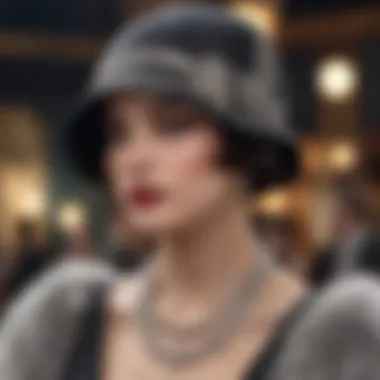
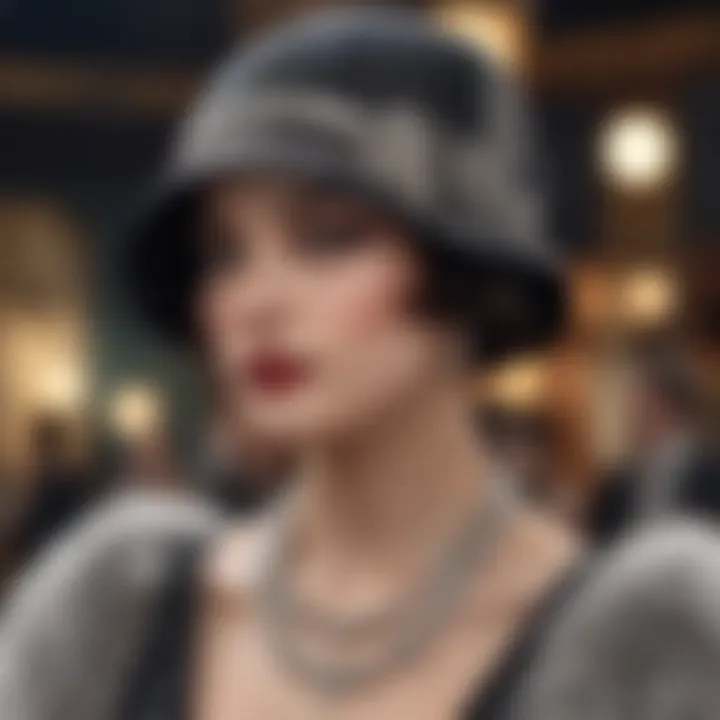
Moreover, the Harlem Renaissance played a crucial role in merging music with fashion. Jazz took center stage, giving rise to an intoxicating atmosphere that urged people to express themselves with more flamboyance and confidence. Jazz music and dance were not just modalities for enjoyment; they were extensions of one’s identity, triggering a wave of creativity that permeated through clothing styles.
The cultural revolution reached into the very fabric of society, creating a mosaic where music, arts, and fashion blended seamlessly, enabling individuals to embrace new forms of expression.
The Rise of Jazz and Dance Fashions
As jazz became the soundtrack of the 1920s, so too did the dance styles evolve to match its rhythm and vivacity. Dance floors turned into spaces of expression, where people sought to outshine each other not only with their moves but also with their dazzling attire. The Charleston, with its fast-paced beats and spirited movements, demanded clothing that allowed for fluidity and dynamism.
Flappers, the youthful women emblematic of this period, embodied this newfound dance culture. They wore loose-fitting dresses adorned with beadwork and fringe, each twirl and shimmy revealing bursts of sparkle. Fabrics like silk and satin defined the look, exuding a sense of glamor that captured the hearts of onlookers.
In summary, the trend of dressing for dance reflected a larger cultural mood – one of revelry and freedom. Women, encouraged by the lively atmosphere, often accessorized their outfits with cloches and long strands of pearls, amplifying their allure. Fashion married with the rhythm of jazz encapsulated the spirit of the Roaring Twenties, setting a precedent that continues to be revered in modern styles.
The Roaring Twenties is remembered not only for its changes in fashion but also for the social fabric it rewove, granting individuals the courage to express themselves in unprecedented ways.
Defining Features of 1920s Dresses
The defining features of 1920s dresses symbolize a break from traditional norms and an embrace of modernity that corresponds with the social changes of the decade. Understanding these elements is not merely an exercise in fashion history; it offers insights into the aspirations and identities of the people who wore these garments. Women in the 1920s sought clothes that reflected their newfound freedoms, and the characteristics of dresses from this epoch are emblematic of that spirit.
Silhouette and Cut
The silhouette and cut of 1920s dresses were revolutionary, moving away from the restrictive designs of the Victorian age. The introduction of the dropped waist style, which created a straight line from the bust to the hem, allowed for greater freedom of movement. This particular shape emphasized a more boyish figure, breaking away from the more curvaceous styles that had been popular before. Such drastic changes in the cut were not simply for aesthetics; they represented an evolving attitude toward femininity. Women were no longer held captive by corsets, and the relaxed fit of the dresses reflected their desire for liberation.
Fabric Choices and Textiles
The fabrics used for dresses during this era played a crucial role in defining their glamorous essence. The choice of material was often a reflection of both personal style and social status.
Silks and Satins
Silk and satin became synonymous with luxury in the 1920s, adding an alluring sheen that caught the light and drew the eye. These materials were lightweight and draped beautifully, providing a sense of movement that complemented the flapper lifestyle. The slick texture not only felt indulgent against the skin, but it also elevated the visual impact of the dresses. However, this opulence came with a cost; silks required careful maintenance, limiting their practicality for everyday wear.
Laces and Beading
Laces and beading adorned many dresses from this period, contributing to their intricate beauty. The delicate nature of lace brought a softness to the silhouettes, while beading added sparkle and depth. These embellishments could transform a simple dress into a work of art. The labor-intensive nature of adding these details made them highly sought after, thus becoming a hallmark of elite fashion. Their use highlighted wealth but also artistry, as each beaded pattern told a different story.
Visual Impact of Patterns
Patterns took center stage in the 1920s, breaking away from solid colors to embrace a kaleidoscope of visuals that captured attention. Geometric shapes, floral motifs, and even abstract designs celebrated the era's vibrant spirit. It was not uncommon to see dresses that combined multiple patterns, showcasing a sense of playful experimentation. The boldness of these patterns allowed women to express their individuality and set trends that would spark envy among their peers. However, the busy designs could sometimes overshadow the wearer, challenging the notion that simplicity was the ultimate key to style.
Color Palettes and Patterns
Color palettes in the 1920s leaned heavily on rich, deep hues, contrasting with the pastel shades of previous decades. Colors like emerald green, sapphire blue, and ruby red conveyed a sense of drama and sophistication, making a statement in social gatherings. Moreover, black became a staple, paving the way for the now-classic little black dress. This color choice wasn't just for its elegance; it also signified modernity and a break from the old-world ideals that had previously governed women’s fashion. The patterns that accompanied these colors often drew inspiration from avant-garde movements in art, further enriching the visual tapestry of the era's fashion.
Understanding these defining features of 1920s dresses offers a lens through which one can appreciate both the bold aesthetic choices and the deeper societal changes they represent. Each aspect—from silhouette to fabric to color—worked in harmony to formulate the unique character of an epoch marked by robust expression and redefined identities.
Influence of Iconic Figures
The fashion landscape of the 1920s was definitively shaped by several influential figures, whose styles and public personas reverberated through society. When one thinks about the sheer glamour and audacity of this era, it's crucial to recognize how these personalities helped pioneer trends that would set the tone for decades to come. They weren't just style icons; rather, they were embodiments of a cultural upheaval that merged liberation with self-expression, making their influence invaluable to understanding the essence of 1920s fashion.
Flapper Style and Its Icons
Clara Bow and the Flapper Movement
Clara Bow is often hailed as the quintessential flapper figure. Her vibrant personality and bold style encapsulated the very spirit of the 1920s. She was a breath of fresh air; with her bobbed hair, alluring flapper dresses, and daring attitudes, she symbolized a generation seeking freedom from the constraints of the past.
One of the hallmarks of Clara Bow's contribution was her embrace of the flapper movement. This cultural shift welcomed women to express themselves through fashion in ways previously deemed scandalous. The key characteristic of her style was the use of vibrant colors and luxurious fabrics, which helped project an image of fun and vitality. This makes her an essential figure in any discussion of the decade’s fashion — she was not just following trends; she was creating them.
Her unique approach to dressing included embracing accessories — think cloche hats and long strands of pearls. This characteristic was not only popular but also beneficial for showcasing the carefree spirit of the time. However, the pressure to maintain that image brought its share of difficulties, often resulting in an exhausting lifestyle for those who tried to keep up. Nevertheless, Clara Bow’s influence is undeniable; she showed women that they could be fashionable and free.
Zelda Fitzgerald's Impact
Zelda Fitzgerald represents another pivotal figure in the flapper era, and her influence transcends just fashion; it includes literature and art. As the wife of author F. Scott Fitzgerald, she was at the center of the Jazz Age's cultural explosion. Zelda wasn't just a muse; she was a trailblazer in her own right. Her distinctive yet bohemian style challenged societal norms and underscored the importance of individuality.
One of the standout characteristics of Zelda’s fashion sense was her audacious use of patterns and eclectic styles. She often mixed high fashion with art deco elements, a blend that made her look fresh and innovative. Compared to the more traditional flappers, Zelda was a breath of artistic air. Her identity as a liberated woman embraced various dimensions of expression — showcasing not just clothing, but rather a lifestyle.
While Zelda's impact was mainly beneficial in breaking barriers, her tumultuous life also reflected the darker pressures faced by those in the limelight. The unique feature of her wardrobe choices was their ability to evoke a sense of both freedom and confinement, cleverly illustrating the tension of the times.
Hollywood's Role in Fashion
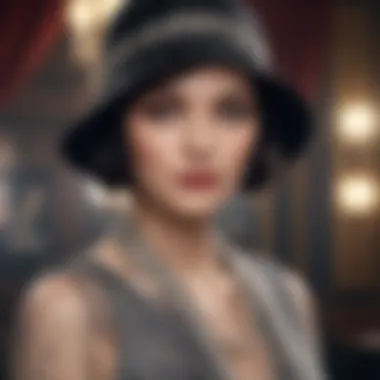
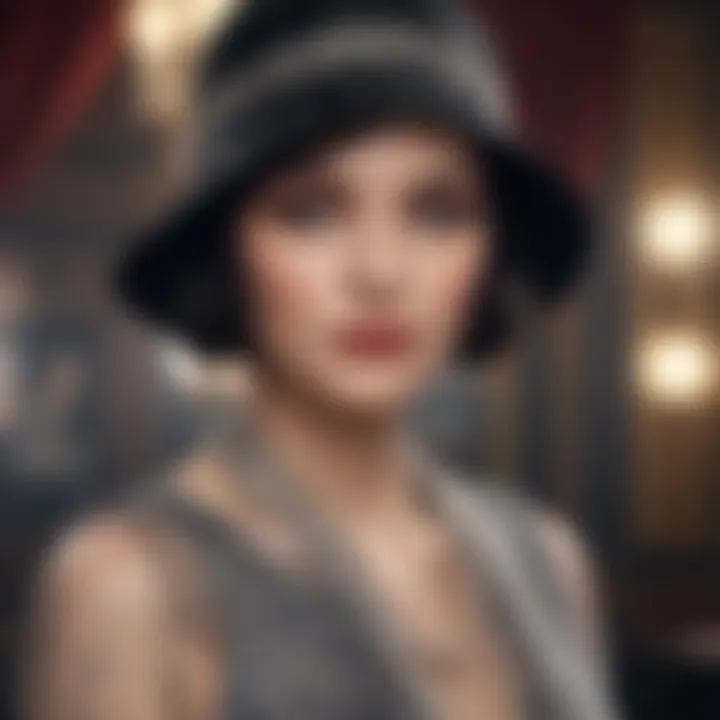
Silent Films to Talkies
The transition from silent films to talkies marked a major turning point in how fashion appeared on screen. During the silent film era, the visuals were paramount — actors’ attire was essential to conveying storylines and emotions without spoken words. With the advent of sound films, the portrayal of glamorous lifestyles became even more pronounced, as audiences heard the characters’ voices along with their striking looks. This evolution allowed viewers to connect on deeper level with the stars, making their outfits all the more impactful.
The significant characteristic of this shift was the enhanced focus on not just the looks but the overall persona of actors. The colorful wardrobes of stars such as Jean Harlow and Greta Garbo inspired everyday fashion. Audiences aspired to emulate the elegance portrayed on the silver screen, thus making Hollywood’s role in shaping contemporary styles undeniable. The unique feature of the transition was how it solidified the connection between celebrity culture and fashion. While silent films laid the groundwork, talkies took it to an entirely new level, ensuring that women across the nation looked to the silver screen for style inspiration.
Celebrity Influence on Trends
As the 1920s galloped on, the influence of celebrities on trends reached unprecedented heights. The glamour of Hollywood stars became tantamount to the desire for individuals at all levels of society to feel more connected to the allure of fame. Stars like Bette Davis and Joan Crawford didn’t just wear beautifully designed dresses; they wore a lifestyle that women craved. The spotlight was not just on clothing but on the entire lifestyle portrayed by these figures.
What’s crucial here is how the celebrity culture worked as a force of aspiration. The key characteristic of this aspect was the accessible persona of stars, which resonated with the masses. The whimsical flapper dresses and intricate beaded accessories worn by these icons became synonymous with the age, allowing everyday women to bring a taste of the fabulous into their wardrobes. However, the downside was a culture of comparison that could lead to insecurities around one’s style or self-image.
In summary, the interplay of these iconic figures effectively shaped the essence of 1920s fashion. Both the flappers and Hollywood stars created a kaleidoscope of influences that helped mold a generation’s understanding of style, self-expression, and social norms. It’s a beautiful paradox of freedom explored through constraints, marking an era that still echoes in today’s fashion.
The Social Context of Fashion
The realm of fashion does not exist in a vacuum. The 1920s stands as one of those moments in history where the fabric of society was interwoven with the styles of the time. This section explores how the social attitudes following World War I shaped the fashion trends of the decade. It is essential for understanding how clothing transcended mere aesthetics to express deeper societal transformations.
Post-War Attitudes
Following the cessation of hostilities in World War I, a palpable shift in attitudes took hold. People were yearning for liberation, a stark difference from the constraints of the past. The war had changed social structures, necessitating women to step into roles traditionally held by men. In the post-war environment, mundane styles were replaced by daring outfits that broke away from Victorian prudence.
The collective desire for change was reflected in the bold nature of 1920s fashion:
- Simplicity: Complex layers gave way to more straightforward cuts, focusing on elegance without excessive fuss.
- Twists on Tradition: Classic garments were revamped to be less restrictive, allowing for greater movement—both physically and socially.
Empowerment through Fashion
Fashion in the 1920s carried an empowering message. It became a medium through which many expressed their independence and newfound freedoms, especially for women.
Defying Gender Norms
Defying gender norms was not just an act of rebellion; it was a coherent statement about societal evolution. Women began wearing shorter hemlines and boyish silhouettes, challenging previously established ideas about femininity. This choice marked a significant shift in identity. The key characteristic of this movement was its emphasis on comfort and ease, allowing women to engage with the world around them.
- Visibility: Wearing these fashion statements women were no longer hidden behind layers of fabric; they were front and center.
- Celebration of Individuality: This shift led to a fashion narrative that said, "I am here, and I will dress on my own terms."
The unique feature of defying gender norms had notable advantages. It provided a platform for expression and encouraged women to break free from prescribed roles. However, not everyone embraced these changes. Critics often derided the emerging styles, viewing them as a threat to established societal norms.
Expression of Freedom
Just as defying gender norms opened new avenues, the expression of freedom found its voice in fashion choices across the board. The flapper style, characterized by its carefree attitude, became synonymous with this era. People began to associate specific clothing styles with attitudes of liberation and spontaneity—a refreshing contrast to the perceived conservatism of the prior decades.
- Courage to Be Bold: The notion that one could spin about with abandon in a fringe dress or don a cloche hat showed a radical rethinking of social propriety.
- Cultural Empowerment: This fashion trend was not isolated; it resonated with movements across the globe, symbolizing a united call for autonomy and self-expression.
The freedom of expression, however, was not without its own challenges. Those who did not conform to the evolving standards often faced scrutiny. Yet, the risks taken highlighted the evolving dialogue on identity and personal freedom during this era, cementing the fashion of the 1920s as more than just a aesthetic choice—it was a powerful statement of the spirit of the age.
"Fashion is the armor to survive the reality of everyday life." - Bill Cunningham
In sum, the social context of 1920s fashion reflects a period of significant upheaval, transformation, and empowerment. The fashion choices made during this era went hand in hand with larger societal shifts, resonating powerfully throughout the decades that followed.
Timeless Elements of 1920s Dresses
The essence of the 1920s fashion isn't merely confined to its opulent fabrics or flamboyant styles; it embodies a cultural revolution that continues to resonate. Understanding the timeless elements of these dresses allows us to recognize their significance in shaping modern wardrobes while embracing the historical context that birthed them. These elements don't just reflect a bygone era; they serve as a bridge connecting past and present, providing both inspiration and functionality for contemporary fashion.
Modern Adaptations of Vintage Styles
In recent years, adapting vintage styles from the 1920s into modern fashion has become quite popular. Designers have realized that while fashion evolves, the elegance of 1920s dresses can be revisited and refreshed. The skillful incorporation of flapper silhouettes, drop waists, and intricate beadwork creates garments that echo the past yet fit seamlessly into today’s aesthetics.
A great example of this adaptation can be found in the revival of the silk slip dress, which mirrors the effortless elegance of flapper gowns while being versatile enough for various occasions. Many designers are blending the romantic silhouettes of the 1920s with contemporary cut and fabrics, leading to a thrilling fusion of old and new.
Key Pieces for Contemporary Wardrobes
Little Black Dresses
The little black dress, a staple in nearly every woman's closet, traces its roots to the styles of the 1920s. This piece symbolizes sophistication and versatility, making it a staple for numerous occasions, from cocktail soirées to more formal gatherings. One key characteristic is its simplicity; the little black dress can often stand alone with minimal accessories or can be dressed up with statement jewelry or a chic shawl.
Its unique feature is its timeless appeal, allowing it to transcends trends and seasons. Little black dresses often vary in length, cut, and embellishments, which offers every woman a choice that suits her personal style. This adaptability makes it a hugely beneficial choice for the modern wardrobe.
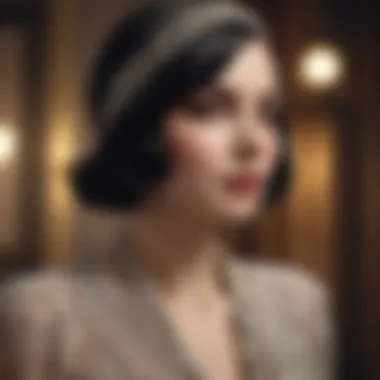
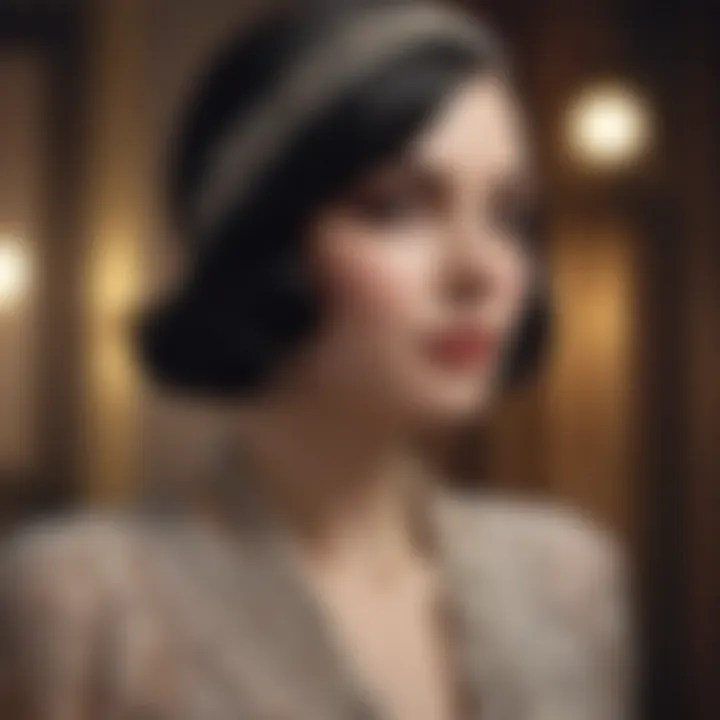
"The little black dress is a canvas; how you paint it comes down to individual expression."
Beaded Accessories
Beaded accessories also play a significant role in encapsulating the spirit of the 1920s. These accents can elevate an outfit instantly, providing that touch of glamour reminiscent of the flapper era. Beaded handbags, necklaces, and headpieces embody the craftsmanship of the time and showcase the importance of detail in fashion.
Key characteristic of beaded accessories is their ability to complement a range of outfits. They can turn an otherwise simple dress into something spectacular and festive, ideal for gatherings and celebrations.
Their unique feature lies in their intricate design and craftsmanship. A well-made beaded piece often tells a story and adds an element of allure. However, it's essential to note that these accessories can sometimes be delicate, requiring careful handling. But when styled thoughtfully, beaded accessories can weave the past into the present beautifully.
Styling 1920s-Inspired Looks Today
Styling outfits inspired by the 1920s is more than just dressing up; it's a way to connect with a vibrant past while expressing personal flair. The essence of the Roaring Twenties is captured in the unique silhouettes and luxurious materials that characterize this era. Embracing these designs today gives a nod to a time of cultural upheaval, artistic freedom, and social change.
When you think about incorporating 1920s elements into contemporary clothing, it helps to consider how such pieces can enhance modern wardrobe staples. With these inspirations, you not only celebrate a timeless aesthetic, but also find yourself weaving history into your everyday life.
Occasions for 1920s Dresses
Gala Events
Gala events represent the epitome of elegance and formality, making them a prime choice for showcasing 1920s-inspired dresses. These occasions typically call for outfits that stand out, a feature exquisitely achieved with the classic drop-waist design and lavish embellishments that defined the period. Choosing a dress adorned with sequins or intricate beadwork will ensure that you turn heads and capture the spirit of glamour that the 1920s embodied.
This is beneficial because galas provide a platform for dramatic expressions of fashion, offering wearers the chance to channel those iconic flapper vibes. Notably, the unique shimmering effects of period-inspired fabrics can enhance your presence at such high-profile events.
However, it’s crucial to balance authenticity with personal comfort on these occasions, as overly elaborate ensembles might detract from the enjoyment of the event.
Themed Parties
Themed parties offer a splendid opportunity to explore 1920s fashion in a more playful context. These gatherings invite participants to wear costumes that capture the essence of a specific time period, effectively turning them into living artworks. When opting for a themed event, you can fully embrace the saxophone sounds that filled speakeasies, donning outfits that align with the extravagant celebration of life.
These occasions are popular because they encourage creativity and offer a space to showcase ensembles that may not fit traditional norms. The beauty of themed parties lies in their uniqueness; everyone present has embraced the same spirit of revelry from the past.
Nonetheless, it is advisable to consider the execution of such ensembles carefully. With so much potential to stand out, being overzealous with accessories or choices can sometimes throw the intended vintage feel off balance.
Mixing Vintage with Modern Elements
Incorporating elements of vintage fashion into your daily wear is a delicate dance that can be done with ease. The trick lies in finding pieces that complement contemporary styles while drawing inspiration from the aesthetic of the 1920s.
For example, pairing a modern top with a vintage-style skirt can create a harmonious blend that captures the eye. Accessories from the era, like clutches and pearls, can throw in that nod to nostalgia without overwhelming the overall modern look. Moreover, it helps to maintain balance within your outfit: a singular vintage element can make a statement, while additional modern touches keep the look grounded.
Accessorizing for Impact
Choosing the Right Footwear
Footwear plays a pivotal role in finalizing a 1920s-inspired outfit. Selecting shoes that channel the grace and character of the time can drastically influence the overall appearance. While flapper-style t-strap heels were once the go-to choice, today you can choose shoes that integrate those era-inspired styles but also provide comfort and support.
The key characteristic to emphasize is that the right footwear can elevate your look while grounding it in history. Opting for platform sandals or stylish pumps lends themselves to both aesthetics and practicality. Remember, comfort also contributes to confidence, a crucial aspect when showcasing any look inspired by the past.
Hats, Jewelry, and More
Hats, jewelry, and other accessories can be the cherries on top of a well-thought-out outfit. When it comes to headwear, cloche hats, so iconic of the 1920s, offer a playful addition to an ensemble. They’re not just decorative; they can alter the silhouette of an outfit, adding depth and character.
Incorporating statement jewelry, especially those with art deco influences or pieces draped in pearls, can provide a captivating focal point. The beauty lies in the juxtaposition of bright and muted colors found in vintage styles alongside modern design elements. Selecting pieces that resonate aesthetically with both periods will not only enhance your look but also inspire discussions about style evolution.
Thus, intricating these various elements together can weave an inspiring narrative of fashion through both past and present.
Ending: The Enduring Allure of 1920s Fashion
The fascination with 1920s fashion is not just a fleeting fancy; it extends far beyond the vintage aesthetic. This era’s fashion encapsulates a unique blend of rebellion and elegance that resonates even in contemporary wardrobes. In exploring this topic, we uncover a tapestry of historical significance, impressive design elements, and cultural impacts that shaped a generation's style choices.
Legacy and Influence on Modern Fashion
The legacy left by the 1920s is palpable in today’s fashion landscape. Influences can be seen in numerous styles that echo the principles of the Roaring Twenties. Today’s designers often look back to that time for inspiration, supplying modern wardrobes with elements reminiscent of flapper dresses, geometric patterns, and bold colors.
- Silhouette Evolution: The drop waist dresses of the 1920s have given rise to a myriad of modern cuts that maintain that same fluidity. The idea of less restrictive clothing has persisted, celebrating freedom of movement.
- Material Revival: Fabrics such as silk and satin that were staples in the 1920s have made their way back into current collections, suggesting a certain opulence and luxury.
- Accessory Madness: Many pieces like beaded clutches and headbands are now often incorporated into outfits, bridging the past and present in a graceful way.
”Fashion is not something that exists in dresses only; fashion is in the sky, in the street, fashion has to do with ideas, the way we live, what is happening.” – Coco Chanel. This statement reminds us that the essence of the 1920s is a part of not just fashion but culture at large.
Embracing the Spirit of the 1920s in Today's Style
Embracing the spirit of this era in one's personal style means more than just wearing vintage clothing. It's about adopting the attitude that sparked a revolution in fashion. Today’s fashionistas can channel this ethos through several practical approaches:
- Mix and Match: Marrying contemporary pieces with vintage ones can help create a unique look while expressing individuality. A 1920s-inspired dress paired with modern footwear achieves a playful yet sophisticated ensemble.
- Occasions for Inspiration: The grand events of the 1920s can inspire modern outfits for various gatherings. Whether it’s a themed soirée or a glamorous gala, channeling the glitz and glamour with outfits that tap into the roaring spirit can make any occasion feel more special.
- Accessorize Boldly: Accessories are essential in achieving a 1920s look today. Feathered headpieces, important jewelry, and eye-catching footwear can reflect the splendor of that time, while still feeling relevant.
Ultimately, the allure of the 1920s style transcends mere clothing; it embodies an essence of liberation, confidence, and individuality. This era invited women to express themselves boldly, a sentiment that remains powerful, urging today’s women to explore their own style narratives while resonating with the glamor of the past.



